Religiões universais
1.

Negros entrando em igreja para o batismo, Rio de Janeiro, c. 1830.
Fonte: Jean Baptiste Debret, Voyage Pittoresque et Historique au Bresil
(Paris,1834-39), vol. 3, plate 8, p. 129. Comentário: Captioned, "Negresses Allant a
L'Eglise, Pour Etre Baptisées" (black females going to church to
be baptized), shows two black mothers (?) elaborately dressed and
bejeweled carrying infant girls and approaching the entrance of a
church; they are followed by an older woman (the mother of the two
women?) and preceded by an older man (the father of the two
women?)--all are greeted at the entrance by the mulatto (?) priest or
some other Catholic official. The engravings in this book were taken
from drawings made by Debret during his residence in Brazil from 1816
to 1831.
2.
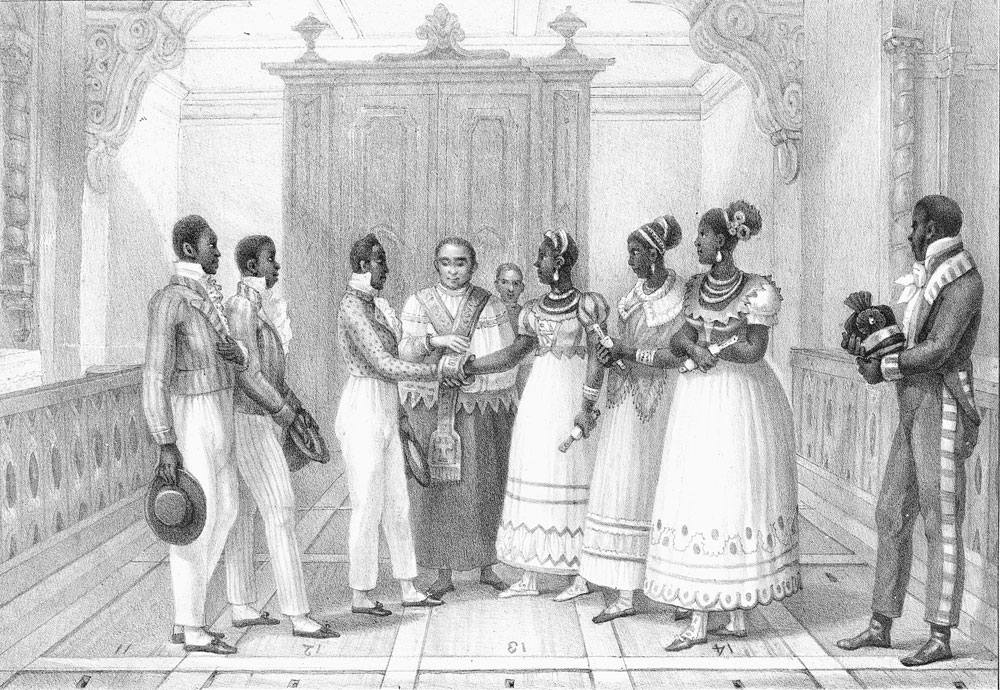
Casamento de negros, Rio de Janeiro, c. 1830.
2.

Casamento de negros, Rio de Janeiro, c. 1830.
Fonte: Jean Baptiste Debret, Voyage Pittoresque et Historique au Bresil
(Paris,1834-39), vol. 3, plate 15, p. 149 . Comentário: Captioned,
"Marriage de Negres d'Une Maison Riche" (marriage of blacks in a
wealthy household), portrays an ornate wedding ceremony, with the bride
and groom elaborately dressed and joined by bridegrooms and
bridesmaids; a European (?) priest joins the couple. The engravings in
this book were taken from drawings made by Debret during his residence
in Brazil from 1816 to 1831.
3.
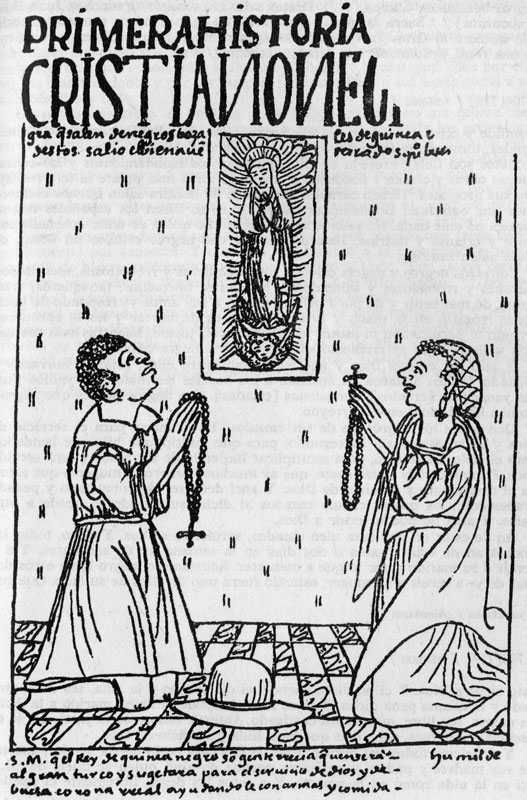
Reza do Rosário no Peru, c. 1600.
3.

Reza do Rosário no Peru, c. 1600.
Fonte: Felipe Guaman Poma de Ayala
[Guaman Poma], El primer nueva
coronica y buen gobierno; edited by John Murra and Rolena Adorno
with translations from Quechua by Jorge L. Urioste (Mexico, 1980; a
facsimile edition),Vol. 2, p. 663. Comentário: Title of
drawing, translated: "Devout black Christians from the stock of
unacculturated black slaves from Africa ('Guinea') say the rosary
before an image of the Virgin Mary"; shows a man (left) and woman, in
full clothing, kneeling before an image of the Virgin Mary. Felipe
Guaman Poma de Ayala was a native Andean from southern Peru who
addressed his lengthy critique of Spanish colonial rule to King Philip
III of Spain. It was written between 1600 and 1615, and is composed of
1,200 pages, including 398 full-page drawings seven of which show
blacks or Africans.
4.
Capa do compromisso da Irmandadede Vigem Senhora do Rosário dos Pretos, Sabará, Minas Gerais, século XVIII.
Fonte: Nelson Aguillar
(Org.). Mostra do
redescobrimento: negro de corpo e alma. São Paulo,
Fundação Bienal de São Paulo, 2000, p. 239.
Comentário: todas as irmandades constituídas no
império português precisavam ter seus compromissos. Estes
eram enviados à Mesa de Consciência e Ordens, em Lisboa, e
depois de 1808, no Rio de Janeiro, para sua aprovação.
Por vezes, eles sofriam reformas e censuras. Destaque-se a beleza de
suas letras e imagens.
5.
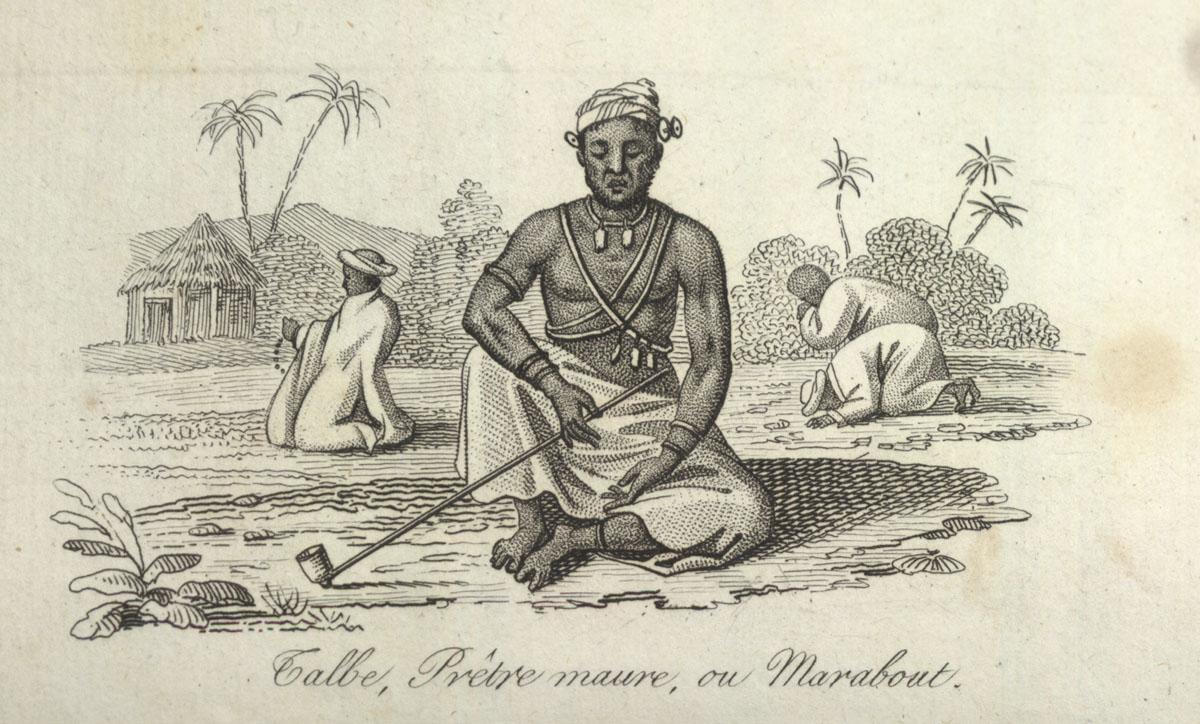
Preto mouro, ou marabout, c. 1780.
Fonte: René Claude Geoffroy de
Villeneuve, L'Afrique, ou histoire,
moeurs, usages et coutumes des africains: le Sénégal (Paris,
1814), vol. 2, facing title page. Comentário: Caption,
"Talbe, pretre maure, ou marabout" (Talbe, a Moor priest, or marabout);
he is wearing various amulets and holding a very long-stemmed pipe; men
praying in the background; also a house. The author lived in the
Senegal region for about two years in the mid-to-late 1780s; he writes
that the engravings in his book were carefully made from drawings that
were mostly done on the spot during his African residence.
6.
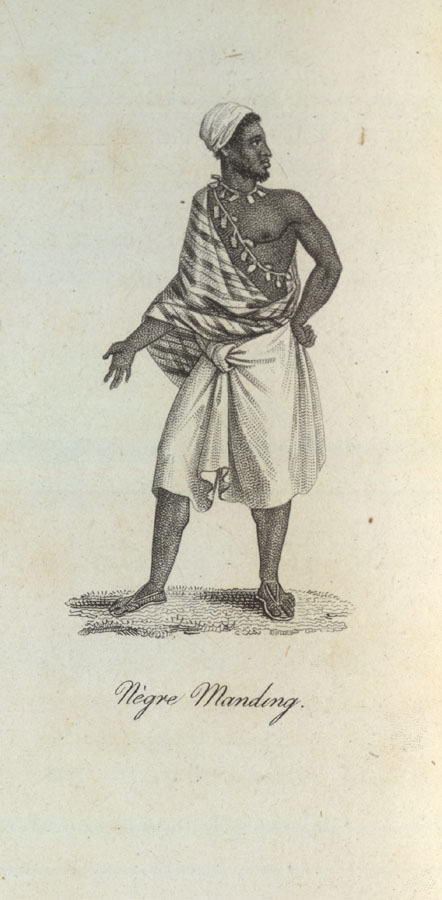
Negro mandingo, c. 1780.
6.

Negro mandingo, c. 1780.
Fonte: René Claude Geoffroy de
Villeneuve, L'Afrique, ou histoire,
moeurs, usages et coutumes des africains: le Sénégal
(Paris, 1814), vol. 3, facing p. 170. Comentário: Caption,
"Negre Manding" (Mandingo Black), showing clothing style (including
sandals), wearing amulets and beads. The author lived in the Senegal
region for about two years in the mid-to-late 1780s; he writes that the
engravings in his book were carefully made from drawings that were
mostly done on the spot during his African residence.
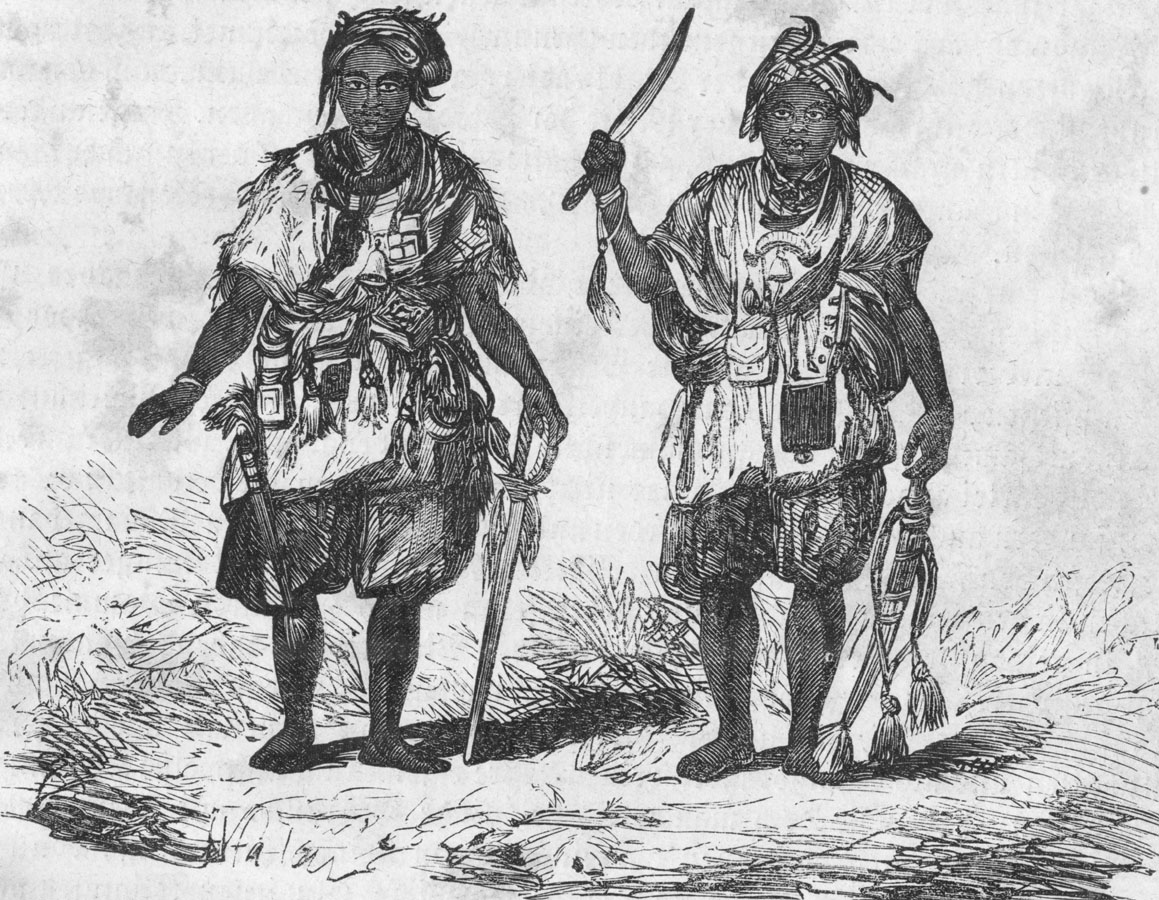
Guerreiros mandingos com armas e amuletos, c. 1860.
7.

Guerreiros mandingos com armas e amuletos, c. 1860.
Fonte: Hermann Wagner, Schilderung der Reisen . . .Eduard Vogel
in Central-Afrika (Leipzig, 1860), p. 303. Comentário: Caption,
"Mandingo Neger" (Mandingo Blacks). Two Mandingo soldiers (?) in full
regalia with swords and knives; both wear protective amulets.
8.
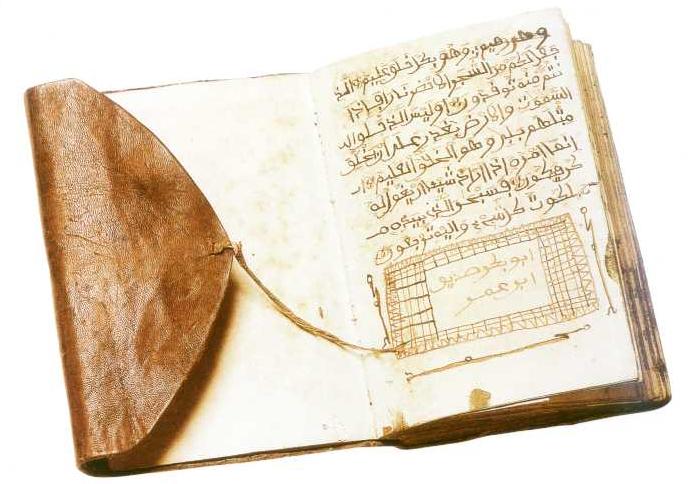
Livrinho encontrado preso ao pescoço de um negro morto durante a insurreição dos Malês na Bahia, em 1835.
Voltar
Livrinho encontrado preso ao pescoço de um negro morto durante a insurreição dos Malês na Bahia, em 1835.
Fonte: Nelson Aguillar
(Org.). Mostra do
redescobrimento: negro de corpo e alma. São Paulo,
Fundação Bienal de São Paulo, 2000, p. 454.
Comentário: Como se percebe nas imagens de negros
muçulmanos e católicos, o uso de mandingas, ou
patuás, era freqüente, principalmente na ocasião da
guerra. As mandingas serviam para proteger as pessoas de perigos. O uso
de trechos do Corão era bastante comum entre escravos
transportados da África Ocidental para a Bahia.
Voltar